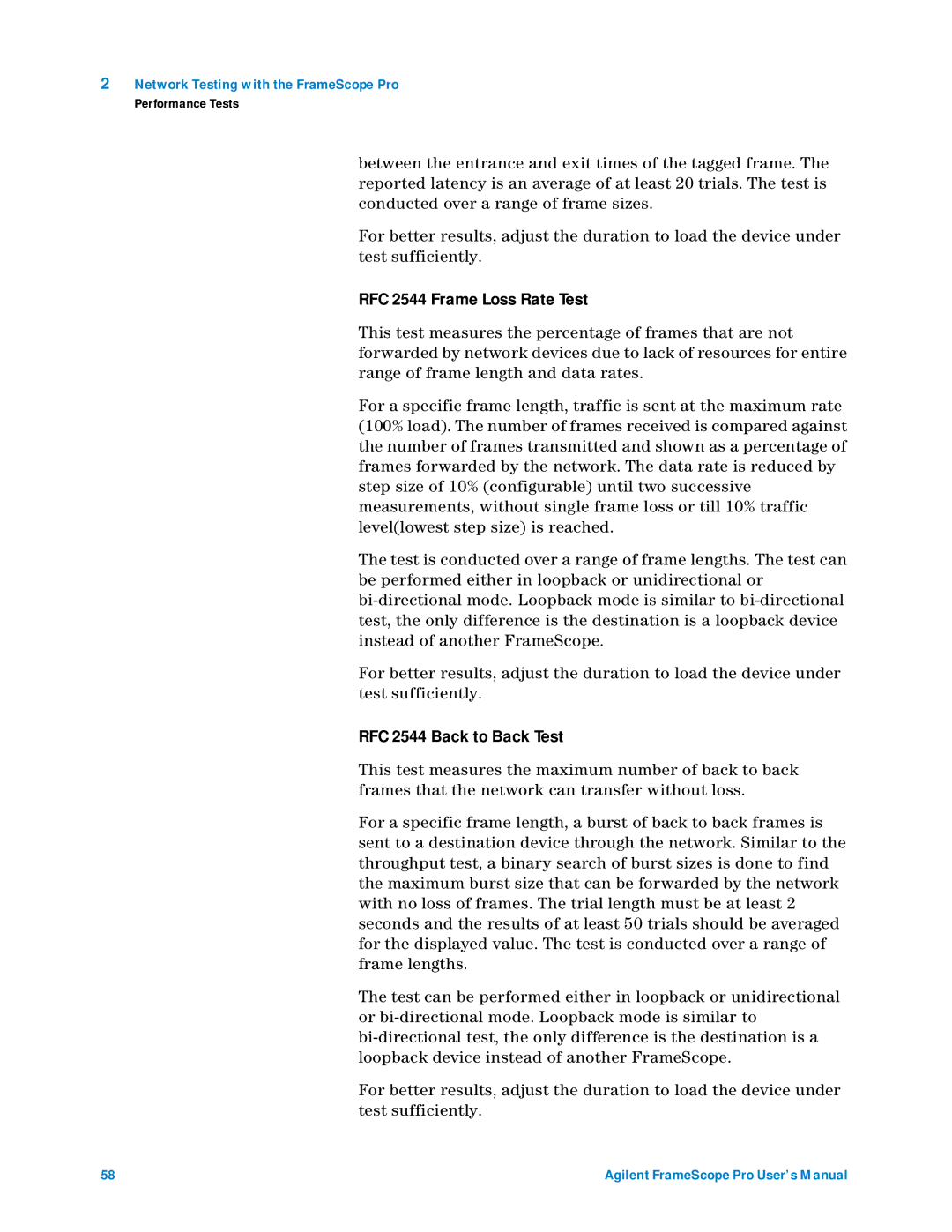2Network Testing with the FrameScope Pro
Performance Tests
between the entrance and exit times of the tagged frame. The reported latency is an average of at least 20 trials. The test is conducted over a range of frame sizes.
For better results, adjust the duration to load the device under test sufficiently.
RFC 2544 Frame Loss Rate Test
This test measures the percentage of frames that are not forwarded by network devices due to lack of resources for entire range of frame length and data rates.
For a specific frame length, traffic is sent at the maximum rate (100% load). The number of frames received is compared against the number of frames transmitted and shown as a percentage of frames forwarded by the network. The data rate is reduced by step size of 10% (configurable) until two successive measurements, without single frame loss or till 10% traffic level(lowest step size) is reached.
The test is conducted over a range of frame lengths. The test can be performed either in loopback or unidirectional or
For better results, adjust the duration to load the device under test sufficiently.
RFC 2544 Back to Back Test
This test measures the maximum number of back to back frames that the network can transfer without loss.
For a specific frame length, a burst of back to back frames is sent to a destination device through the network. Similar to the throughput test, a binary search of burst sizes is done to find the maximum burst size that can be forwarded by the network with no loss of frames. The trial length must be at least 2 seconds and the results of at least 50 trials should be averaged for the displayed value. The test is conducted over a range of frame lengths.
The test can be performed either in loopback or unidirectional or
For better results, adjust the duration to load the device under test sufficiently.
58 | Agilent FrameScope Pro User’s Manual |
